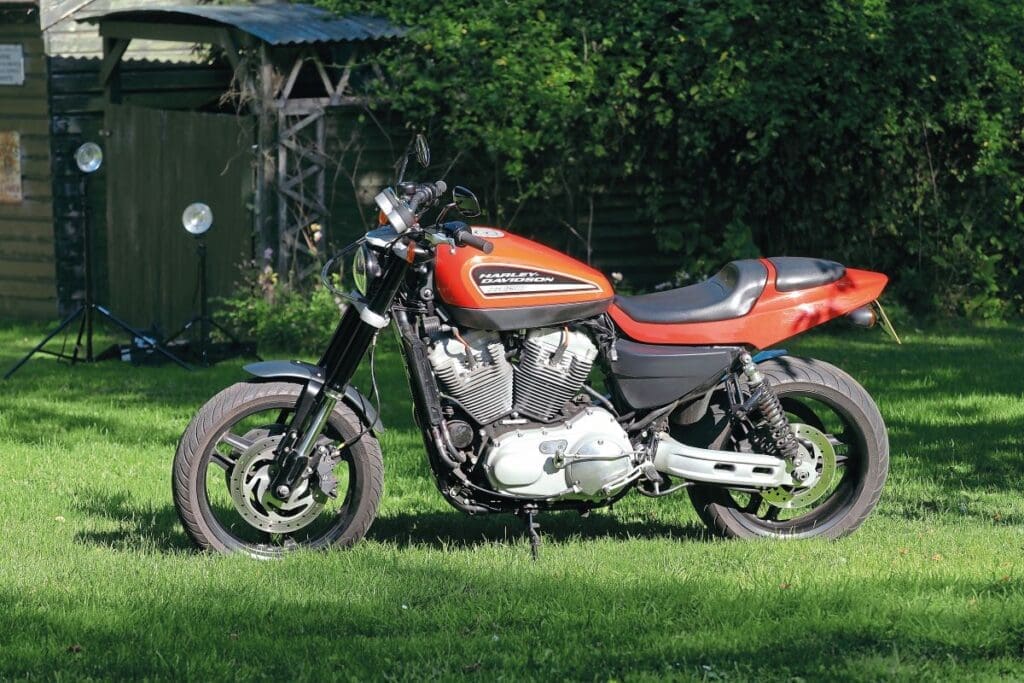Harley folks didn’t like the XR because it was a sportsbike, while sportsbike riders didn’t buy Harleys. But their loss could now be your gain if you fancy a grunty, naked piece of history with attitude

Words by Oli Hulme and Maria Hull
Photos by Maria
Being the PR person for Harley-Davidson must be a frustrating business. The company has made several motorcycles that were absolute sales duds right up until the moment they went out of production – and then they suddenly become hopelessly desirable. Take the sexy but unsellable XLCR Café Racer, a motorcycle of hopeless ergonomics and jaw-droppingly beautiful looks that lasted just a few years in the late 1970s, yet is now highly sought-after. Or the XR1000, a tyre-shredding powerhouse fitted with a brilliant, uprated Sportster engine featuring a pair of racing heads so it could be fitted with individual carbs. The XR1000 was launched in 1983 and lasted to 1984 as a road-homologated version of the legendary XR750 flat tracker. Much pricier than the standard Sportster, it soon vanished from showrooms and promptly became a valuable cult item.
Then, in 2008, Harley-Davidson launched the XR1200 in another attempt to capture the performance bruiser market. Codename ‘Steroid’ followed pleas from Harley Europe asking for an air-cooled, big V-twin that wasn’t a tourer or a cruiser, but one that handled and performed like a big, chunky sportsbike. For reasons best known to itself, it believed that this sort of bike would attract buyers on this side of the pond and possibly attract a younger demographic. Harley-Davidson had been terrified for decades that its core market was getting older and would soon evaporate. At this point, Harley’s pursuit of the sports market had been with its ownership of Buell, but this was heading for the rocks. It also owned MV Agusta, in one of the most ill-founded deals in motorcycling history when it paid $109 million (£65 million) for MV (most of that debts) and sold it two years later – back to the people it’d bought from – for one Euro.
Harley responded to the requests for a sporty Euro-Harley by doing what it had done in 1983. It took a look at flat track racing, which has always been popular in the USA but almost unheard of in Europe, and created the sporty XR1200. This was initially only available in the European market, but unlike the XR1000, this was no homologation special – it was a proper, mass-produced road bike.
Launched in 2008, the XR was a serious attempt at the kind of high-performance sportsbike with drop-dead gorgeous lines that were doing well in the marketplace, as evidenced by the sales of Ducati Monster 1000 and the powerful but less glam XJR1300 Yamaha, but having one with a Harley-Davidson badge on it was just confusing for many.
It used a 1200cc Evolution engine with performance cams, fuel injection, some clever cooling on the cylinder heads and a beefy oil cooler. This was an engine built for high torque and with hydraulic tappets looking after it wasn’t a big issue. Suspension came from Showa.
It had an all-new frame of its own (and you could actually change the drive belt without taking the cast aluminium swingarm off, which was not the case with all Harleys). Bizarrely for a Harley, the exhaust was rather too big to make it attractive and too quiet for most people interested. The clocks were minimalist (not even a clock), not to say cheap-looking, but the brakes had four-piston calipers, there were very sporty-looking three-spoke alloy wheel, and tyres specially designed by Dunlop for the XR1200. Somehow, Harley manged to create plastic bodywork that showed off the tall engine without making the XR look too tall. It weighed a hefty 260kg, Harley claimed 90bhp at 7000rpm and 73.8ft.lb of torque at 3700 revs – 15bhp less than an XJR 1300, which, although no lightweight, was 30kg lighter and produced around the same torque as the XR1200, though at higher revs. Later tests put the Harley’s power as low as 75bhp. The new Ducati Monster 1100R put out 85-90bhp and was an incredible 70kg lighter.
In 2009/2010, there was a short-lived and entertaining (if terrifying for the competitors) XR1200 race series supporting BSB races, organised by Harley using bikes developed in the UK with Harris performance sorting the handling after initial racer tests proved doubtful of the safety with the weight and the rather basic forks, even though they were only using stock XR1200 engines. But remember, these were top riders in a top national race series. Harris still lists race kit for the XR1200 on its website.

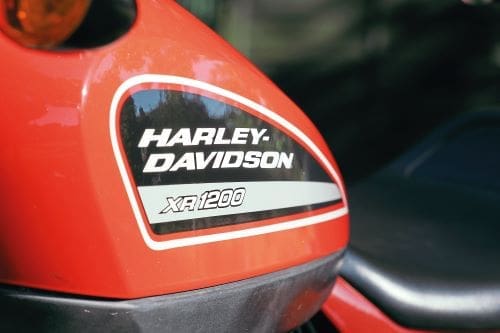
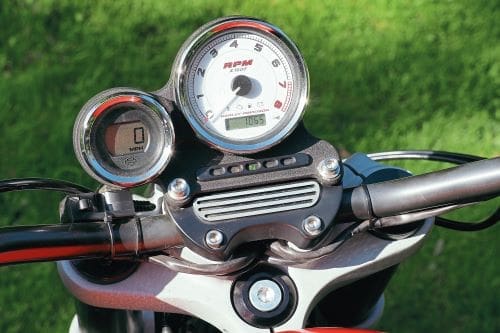
The problem remained that XR1200 was sitting on showroom floors, unsold. Sportsbike riders refused to be lured by a Harley offering, while Harley owners wanted, well, Harleys. The XR didn’t so much fall out of favour, as never fell into favour. Consequently, sales never took off.
There were many concerns too among those who had bought them about the quality of the finish, which was poor compared to Japanese and Italian rivals. The plating fell off nuts and bolts as soon as they were exposed to Euro-dampness, and the metal underneath quickly went rusty. The top yoke bolt and washer looked like it came from a scaffolder’s bucket. It was just as well there wasn’t much shininess on the XR1200, which would have looked out of place anyway. And perhaps the buyers of sports bikes in the 2000s simply could not deal with the unfussy, airy and cool environment of Harley showrooms.
Undaunted, Harley had another crack at the market in 2011, launching the XR1200X. This was a new version of the snarling beastie, with all-black paint and trim. There were uprated and fully adjustable piggyback Showa shocks, the upside-down Showa forks were now adjustable, and the niggles with the finish on the original XR looked to have been sorted. And the top yoke bolt was a Torx affair with machined allot spacer. Nice.
The original XR1200 had arrived in US showrooms slightly later than European ones, possibly because a US Harley performance specialist had copyrighted the name for himself, and that had to be resolved too. But just as in Europe the XR didn’t exactly fly out of the showrooms and by 2013, the XR’s day was done.
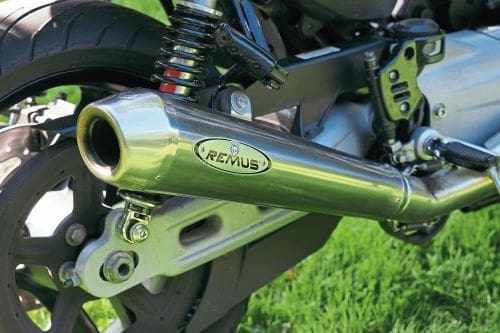
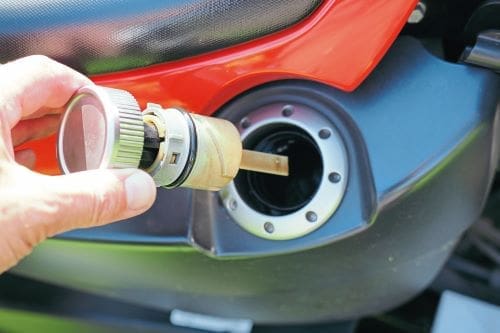
And then, inevitably, people started to want them. Hipster biker culture, then in its infancy, combined with a resurgence in interest in flat track racing, may have been the reason for this. Whatever, the XR1200 suddenly found itself bang on fashion. Unlike Japanese naked super sportsbikes, the value of a Harley-Davidson doesn’t plummet as soon as you wheel it out of the showroom, which may have had something to do with it, or perhaps it was a reaction to the overdressing of the Milwaukee company’s other products, but it happened. The XR did, after all, look cool. Prices locked out for used bikes at just above £5000 and then began to rise. Not dramatically, but they did rise.
Nowadays, they start at £5500 and top out at around £8000. Given that the XR cost £7600 new, that’s not exactly a catastrophic price drop. Can you think of another 21st century bike that has only lost £1000 off its original price? Just maybe it is time to give the XR a chance.
We’ve got one – living with an XR1200
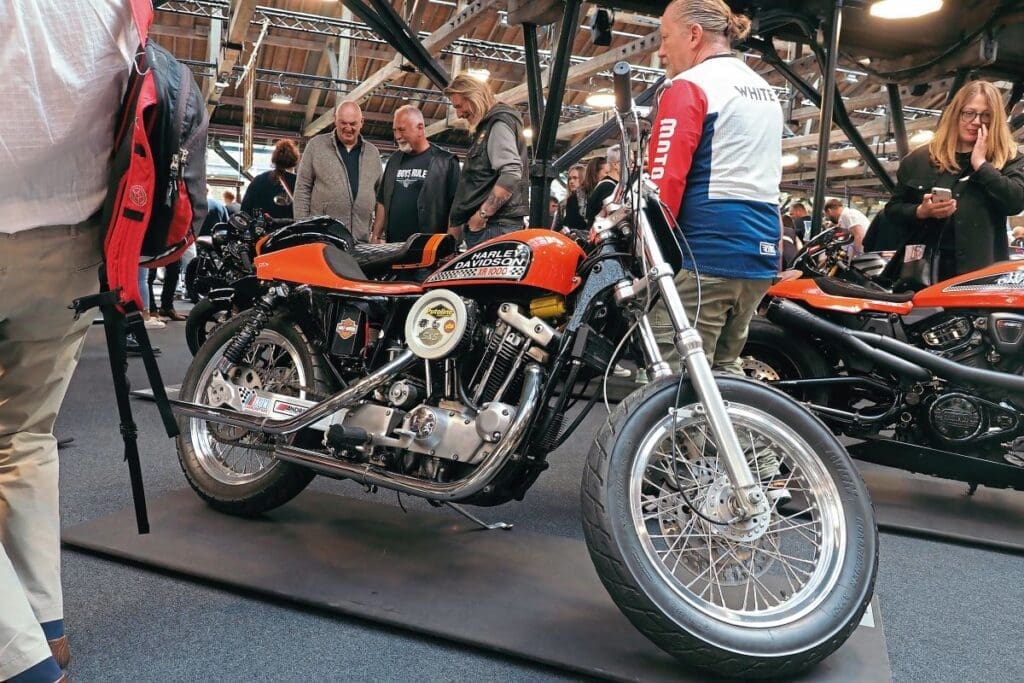
Maria Hull fell in love with an XR1000 special at last year’s Bike Shed Show in London, to which I let her know of the 1200. Within days she’d found a great example and a deal was done. It’s an original, 20k-mile example that apart from a Remus exhaust system, is stock.
“I love the way it looks, it sounds, it rides… and the fact it’s different. And what’s a woman doing riding that?! We are surrounded by potatoes (Harleys), with many friends owning them, though mostly older, carb’d models and choppers, but the stance of the XR, the attitude just attracted me,” says Maria. It’s not an everyday bike, but for jaunts when it’s dry, blatting around the countryside. Does a 250kg bike concern a 5ft 4in tall rider? Maria smiles: “The seating position is perfect for me. You can drop a Monkey bike if you’re not careful – I’m aware of the weight, but it’s only an issue when stationary, and if it’s going to go, I’ll just let it go. Anyway, Matt keeps stealing it!”
Neither of us have owned a Harley-Davidson before, so the switchgear, the sound like it isn’t going to start, the heart-in-the-mouth sidestand, the vibrations on idle and clunk as first gear finds home are all new to us. But the rest is strangely familiar. Position is lower front and rear for Maria but also fine for me. The handlebars have you in a good position for a naked and are not too wide. Mirrors, standard Harley fayre, need your arm moving up to see, but are nice and clear. Steering lock is rubbish, but no worse than a Ducati Monster or Sportsbike.
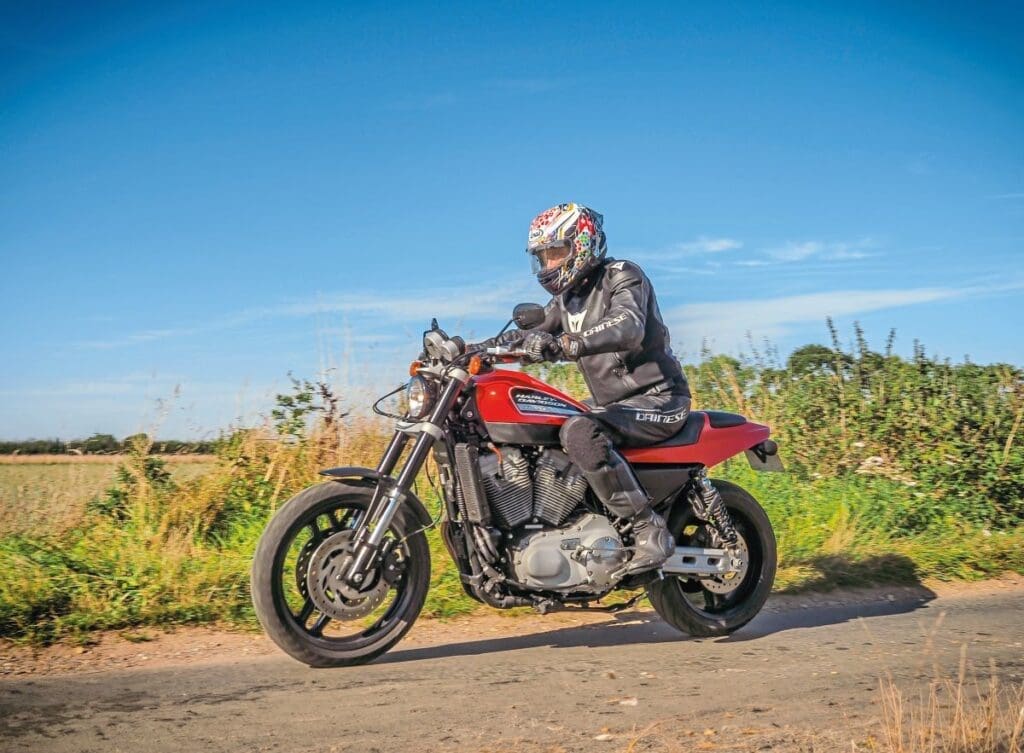
‘Clunk’ into first and the sound is intoxicating, those 600cc pistons firing just after each other, then having a rest for a moment, hence the ‘potato’ sound. The Remus exhaust isn’t too loud, and quieter than the standard system on the 961 Commando I rode recently, but is much quieter than the standard twin-silencer set-up. Sounds gorgeous.
Through the five gears doesn’t take long and long-distance cruising was not on the build sheet, as its most comfortable cruising speed is 65-75mph. More revs feel – un-Harley. But if you’re flying down the motorway then you’re missing out – you should be on an A or B road. Then you can take your fill of the insurmountable amount of sheer thrust the V-twin can offer – hold on.
The bike is long and the geometry is unusual, but works. It’s not too fast and isn’t a sportsbike, more like a Suzuki 1200 Bandit or older GS1000 in its cornering, even. The brakes work well, but if you’re planning, then the engine braking should do it all for you.
Even the seat is comfortable. Unless you mean the pillion seat, which is like a bucking bronco ride, but with a smaller perch and no rein to hold onto. This is a solo bike. And the tank is a plastic cover, so no tank bag, and there are no luggage hooks under the seat unit, so no tailpack. You’ll have to put your toothbrush and undies in a rucksack. Well, for the 120 miles or so the tank holds, less if you’re gunning it, and if you see the tiny fuel light come on, find petrol immediately – ‘reserve’ is more like ‘emergency fumes’.
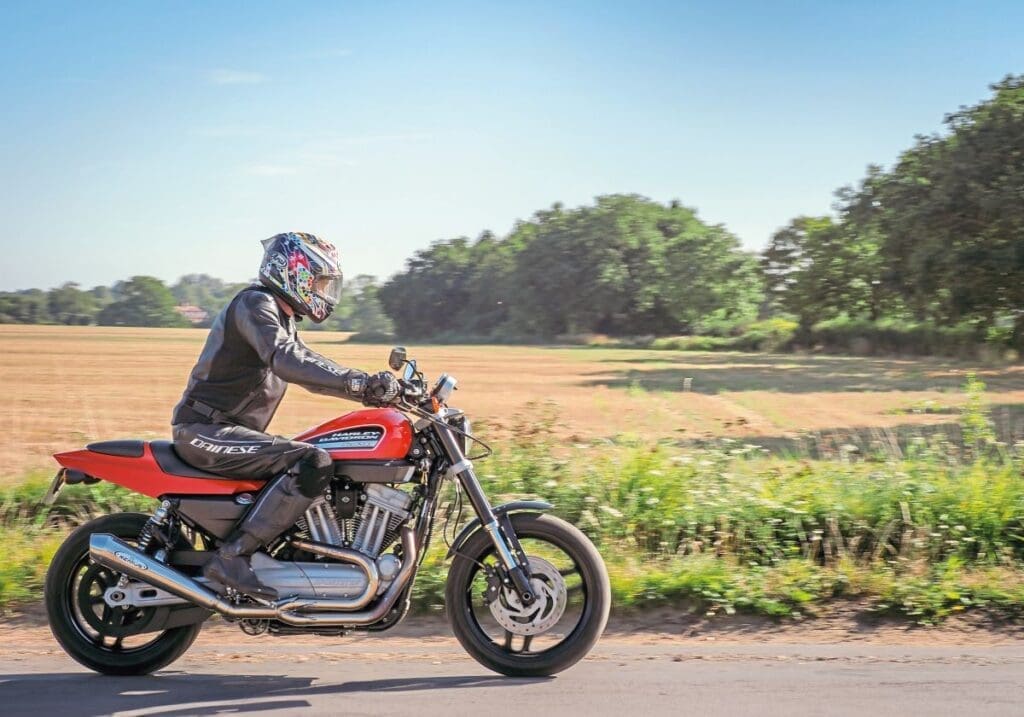
Finish is not great; someone has replaced many of the bolts with stainless Allen head bolts on Maria’s. And the matt finish will be tricky to keep clean over time. But it is nearly 15 years old and looks great so far, so it’s not as bad as a Suzuki. The oil cooler sticks out concerningly, the pegs are not sprung, and the speedo looks like it came from eBay… and always carry an immobiliser battery.
The Harley-Davidson XR1200 is a cracking bike for blatting around the lanes, having fun, yet not trying too hard. That soundtrack is hard to beat (notice how all Hollywood films dub any bike with a Harley), the comfort is perfect for most riders and, for the tank range, the five speeds are enough for what the bike is designed for. It’s like a custom muscle bike, built for you by a factory. As a fun Sunday bike. Maria loves it, I love it. Yet we still don’t feel like ‘Harley owners’…

Harley-Davidson Europe’s technical manager on what to look out for
“Like any motorcycle, you want to check the normal things, such as tyres, wheel bearings, fork seals etc. However, there are a few unique things to a Harley that you also need to inspect. Like many Harleys, the XR has a Kevlar belt – like chain drives, always check the condition. Belts aren’t susceptible to failure, but if the pulleys pick up a stone, this can punch a hole through the belt. If the hole is in the middle of the belt and not more than 7mm or 8mm in diameter, this is not a problem, but if the damage cuts the edge of the belt, it can lead to a tear and a snapped belt. The good news for the XR is that unlike some models that require the swingarm to be removed to swap the belt, you only need to take the right-hand shock off. A belt, if looked after (tension spec adhered to and so on), can last the life of the bike.
“Harley has been building the Sportster range for so long that the motor is a proven unit, but the XR’s isn’t a totally standard engine; it has oil-cooling around the exhaust valve pockets. The 2010/2011 UK BSB XR1200 support series bikes ran with totally stock XR motors, which shows how reliable the engine is because it was put through its paces and never overheated!
“Always go for a bike with a good service history, which is every 5000 miles, and as it has hydraulic tappets, there are no valve clearances to check. One thing to watch out for is the type of oil used by the owner. While inline-fours run lightweight oil, a Harley’s air-cooled motor needs 20/50 oil because it must deal with a wider temperature variance and, therefore, needs the thicker oil to protect it. When it comes to performance, a free-flow air filter and exhaust matched to a new ECU map makes the bike not only sound great, but it also helps release a bit of extra torque and power without affecting reliability.
“There are a few ex-race bikes out there, which are actually quite different to the standard road bike. The racers had a 17-inch front wheel to widen the tyre choice, Harris Performance fork yokes, and longer rear Öhlins shocks to sharpen the geometry. Obviously, Harley doesn’t recommend you alter the bike from standard as stability may be compromised. Harris Performance may still sell the parts required to make an XR racer rep for the road and these are fabulous bikes to ride!”
SPECIFICATION
ENGINE: Dry sump 1202cc ohv v-twin Compression Ratio: 10:1 BORE and STROKE: 88.9 x 96.8mm POWER: 90bhp@7000rpm PRIMARY DRIVE: Chain/wet multiplate clutch, five-speed gearbox IGNITION: Electronic WHEELS/TYRES: Front 120.70×18, rear 190/50×17 BRAKES: Twin 292mm discs, four-piston calipers, rear single 260mm disc FUEL TANK: 13.5 litres OIL CAPACITY: 2.65 litres SEAT HEIGHT: 30.5 inches WHEELBASE: 60in/1519mm GROUND CLEARANCE: 5.8in DRY WEIGHT: 562lb/254kg
